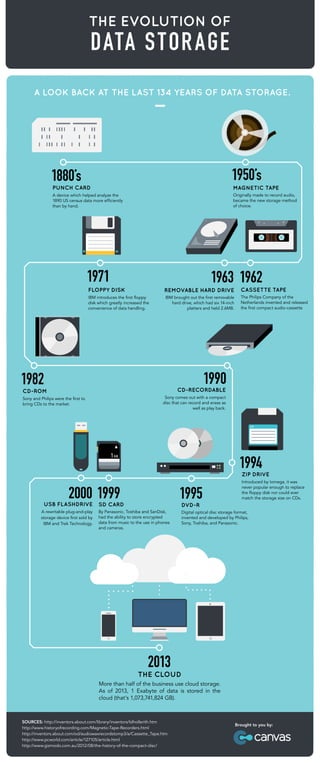From dusty attics to cloud arrays, explore the future of long term storage and unlock the secrets of data preservation.

Image courtesy of Rodion Kutsaiev via Pexels
Table of Contents
- Bridge to the Past: From Ancient Manuscripts to Magnetic Tapes
- The Digital Revolution: The Birth of Modern Storage Technologies
- The Challenges of Long-Term Data Storage
- Innovations Shaping the Future of Long-Term Storage
- Ensuring Accessibility and Security
- Conclusion: Unlocking Infinite Possibilities
Welcome to the fascinating world of long-term storage! As we navigate through this ever-evolving digital era, our need for efficient and secure solutions to store copious amounts of data becomes paramount. The future of long-term storage holds infinite possibilities, and it’s time to uncover the innovative technologies that will shape our world. Join us on this exciting journey as we explore the evolution of long-term storage, the challenges it presents, and the groundbreaking innovations that are revolutionizing the field.
Bridge to the Past: From Ancient Manuscripts to Magnetic Tapes
In the quest to preserve human knowledge, our ancestors developed ingenious methods for storing information. From ancient manuscripts written on papyrus to etching inscriptions on stone tablets, early civilizations found creative ways to record and secure vital data.
Fast forward to the advent of modern storage technologies, and we witnessed a revolution in the way data is stored and accessed. Magnetic tapes emerged as the go-to choice during the mid-20th century. While they allowed for massive data storage and played a significant role in data processing, they were not without limitations.
The Digital Revolution: The Birth of Modern Storage Technologies
With the digital revolution came a wave of groundbreaking storage solutions. Compact discs (CD-ROMs) and digital video discs (DVD-ROMs) were introduced, revolutionizing how data was stored and accessed. These optical discs allowed for large-scale information preservation, enabling industries to take a significant leap forward in digitizing and archiving data.
As technological advancements surged, hard disk drives (HDD) became the primary choice for data storage due to their higher capacity and faster data retrieval capabilities. These spinning magnetic platters transformed the storage landscape, empowering businesses and individuals alike.
With the steady march of progress, solid-state drives (SSD) arrived on the scene. Unlike traditional HDDs, SSDs use flash memory technology, eliminating the need for moving parts and offering faster access speeds, enhanced durability, and improved energy efficiency. Soon, SSDs began replacing HDDs as the preferred storage medium for both consumers and enterprises.
Stage 10: Last punt, let's go up by orders of magnitude. This is the future of high-capacity storage. pic.twitter.com/HlMnPriSj9
— 𝐷𝑟. 𝐼𝑎𝑛 𝐶𝑢𝑡𝑟𝑒𝑠𝑠 (@IanCutress) December 4, 2023
The Challenges of Long-Term Data Storage
While the evolution of storage technologies has been remarkable, long-term data storage presents a myriad of challenges that need to be addressed. One such challenge is data degradation and obsolescence. As technology marches forward and file formats change, older data becomes harder to retrieve, opening the door to potential loss.

Image courtesy of www.slideshare.net via Google Images
Additionally, hardware failures and data corruption risks loom over the prospect of long-term storage. The demise of storage devices, coupled with the ever-increasing volume of data, makes it critical to find solutions that can withstand the test of time.
Innovations Shaping the Future of Long-Term Storage
The future of long-term storage holds exciting possibilities, with cutting-edge innovations on the horizon. By exploring these innovative technologies, we can reimagine how data is preserved for generations to come.
DNA-Based Storage: Rewriting the Rules of Preservation
Imagine storing vast amounts of data within the building blocks of life itself. DNA-based storage allows us to do just that. By harnessing the inherent stability and high information density of DNA molecules, scientists have unlocked the potential to store massive amounts of data for extended periods.
Overcoming challenges such as the cost and time required for reading and writing DNA, researchers are making strides in DNA-based storage. The future may see us storing libraries of information within minuscule DNA strands, preserving them for centuries to come.
Quantum Storage: Tapping into the Power of Quantum Mechanics
Quantum mechanics, the mind-boggling realm where the laws of physics seem to bend, also holds promise for long-term data storage. Quantum storage explores the principles of quantum entanglement and superposition to store and retrieve data with unprecedented speed and security.
While quantum storage is still in its infancy, scientists have already achieved breakthroughs in quantum memory, paving the way for potential applications in long-term data storage. Harnessing the power of quantum mechanics could redefine the storage landscape, opening doors to unimaginable possibilities.
Holographic Storage: The Rise of Three-Dimensional Data Preservation
Enter the realm of holographic storage, where data can be stored and retrieved in three-dimensional form. Holographic storage utilizes the interference patterns of laser beams to store vast amounts of information within a single medium.
While it remains a relatively nascent technology, holographic storage offers unique advantages such as high storage density, faster access speeds, and resistance to environmental factors. With ongoing research and development efforts, holographic storage holds the potential to transform the world of long-term data preservation.
Ensuring Accessibility and Security
As we venture into the future of long-term storage, ensuring accessibility and security remains crucial. Data migration and future-proofing strategies become vital to prevent the loss of valuable information due to outdated file formats or failing hardware.
![]()
Image courtesy of essd.copernicus.org via Google Images
Implementing redundancy and fail-safe measures is also necessary to combat the risks of data corruption and hardware failures. By adopting robust encryption and cybersecurity practices, we can safeguard our stored data from unauthorized access and potential breaches.
Conclusion: Unlocking Infinite Possibilities
In a world driven by data, the future of long-term storage holds incredible potential. From DNA-based storage to quantum mechanics and holographic storage, these innovative technologies have the power to reshape our understanding of data preservation. By addressing the challenges of degradation and scalability while prioritizing accessibility and security, we can unlock infinite possibilities in the realm of long-term storage. Brace yourself for an awe-inspiring journey into the future, where data preservation knows no bounds!
